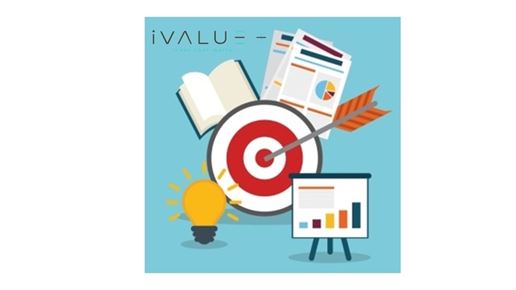Have you used any new tools or applications recently that have helped improve your workflow?
September 10, 2020
If you recently hired someone, what questions helped you the most in making your decision?
September 16, 2020What are your aspirations for the week, month, and year?
The big question: How do you get started or re-engaged with things you want do with your life? What are your before-you-die aspirations?
The first step is simple to write down your list in a place that you will revisit. For example, since I was twenty, I have kept a diary everywhere I go. When finish a journey I put it near my daily work desk with the 4-5 most recent ones. The older diaries I archive in my closet (where I can see them). These help me revisit my ideas, prayers, dreams, etc. Keep in mind I don’t journal every day, but whenever I am inspired, I have immediate access to a tool to record and review my thoughts.
The second step is to- talk about your list with others. It’s a great conversation starter and people enjoy bucket list talk. Make sure to include your spouse or kids if applicable and make it a family affair.
One crucial principle: It’s the no perfect list principle. Don’t try to get the list right, idea is to just get it started. Do not worry about dreaming too big or too small. Simply get started. Do not worry about what others will think. Simply get started. Do not worry about how many things you have written down. Simply get started. Write, right now.
Don’t try to get the list right, just get it started. Don’t worry about dreaming too big or too small. Just get started.
The five kinds of aspirations:
Aspiration #1: A THING TO DO
. The most basic bucket list point is an event or experience. These one-time experiences don’t usually require training or even extraordinary expense. All they require is planning and prioritizing. For example:
• Attend the World Series
• Climb Everest
• Go to a reunion concert with college friends
• Watch the entire Star Wars saga in just one sitting
• Go sky-diving or Bungee Jumping
Aspiration #2: A PLACE TO GO
. Maybe you have always wanted take a special vacation. Perhaps a crazy destination or some excellent adventure.
• See the Pyramids
• Take a romantic getaway weekend in Paris.
• Hike the Grand Canyon
• Take a mission trip to Kenya
Aspiration #3: A SKILL TO LEARN
. I have found that most people want to learn something, but never take out the time to learn. This thing could be a hobby, passion or some kind of personal discipline. For example:
• Take a photography class
• Impress people with ballroom dance
• Get a handgun permit
• Learn to speak Spanish
• Grow a bonsai garden
Aspiration #4:
AN OBJECTIVE TO ACHIEVE. Your goal may come in many forms: athletic, financial, professional, etc.
• Run a marathon in Vibram 5-finger shoes
• Do a cycling tour
• Save $150,000 in ten years
• Start an at-home business
• Spend two-three months a year donating time oversees
Remember that life is not measured by the number of breaths we take, but by moment’s hat take our breath away! –Vicki Corona
Aspiration #5:
A POSSESSION TO OBTAIN. Maybe you have always wanted to have something really precise. It could be something you collect, rent, or own.
• Buy a really powerful telescope
• Drive an 1969 Jaguar XKE for a weekend
• Have a home with a pool
• Own a charter plane
Spend 30 minutes and write down your ideas. Remember there is absolutely no perfect list just a perfect start- by actually starting.
How to Write Personal Goals & Aspirations!!
Personal goals and aspirations are what an individual would like to attain in his life. Goals and aspirations can be short-term or long-term. Writing down goals can be difficult, because it requires you to be decisive and eliminate unrealistic ambitions. Once you decide on your goals and aspirations, you can begin to take the necessary steps to achieve them.
Writing personal evaluations can be complicated. While employees can’t realistically make themselves out to be perfect, giving a supervisor a list of flaws – even if it comes with a plan to change for the better – is also not pleasing. Setting realistic goals is definitely a good middle ground. It provides an opportunity to show an employer what has already been achieved, while providing a list of things that can still be improved or achieved.
Be Specific
Goals for a performance evaluation should be very specific, making clear the changes and improvements that are to be expected before the next evaluation period. Whether it is performance related (recruit more customers), personal development (add more input in group meetings) or career development (earn a degree in two years), try to avoid generic statements. Saying, “I want to excel in my career,” is vague and lazy. A specific goal might read, “It’s my goal to get promoted to CEO in six months.”
Make it Measurable
Create goals that are measurable or quantifiable so progress can be actually analyzed with actual numbers. A generic statement might read, “I want to increase sales,” However, a measurable goal might read, “I will raise my sales by at least 20% over the next fiscal year,”
Be Realistic
When setting goals for a performance evaluation, it’s important not to set oneself up for the failure. Although big ideas and expectations sound nice, one can crash hard if aiming way too high. Set goals that are challenging, but certainly not impossible. Create a plan of action to achieve each goal before submitting them to a senior. This makes it easier to tell whether or not a goal is achievable in a certain time bracket.
Make it Relevant
The goals on a performance evaluation should be pertinent to the employee’s current position. While setting a goal to one day become president of a company is admirable, it would have no current significance if it came from a clerk in the company’s merchandising department. Realistic goals are the small steps that need to be taken between a current position and the long-term goal — for example, pitching new clients or coming up with ideas to market the company’s product. Choose goals that can be accomplished at present.
Create a Timeline
For each goal, submit a clear timeline along with the plan of action. Depending on the time between evaluations, break down job aspirations into weekly, monthly, quarterly or yearly goals.
How to set your professional goals:
1: Personalize your goals
You don’t need to write essays or copy what others write. But do make it SMART: specific, measurable, achievable, realistic/relevant, time-bound.
Short on time? Try creating answers to these statements:
This month/year I will:
• Start…
• Stop…
• Continue…
2: Invest time in self development
Will next year actually be the year you finally read that pile of books next to your bed? One can make it happen. Investing in your continuing professional development is essential to keep your skills fresh, knowledge up-to-date and to constantly grow with time. Podcasts, blogs, professional association’s publications and social media make it easier than ever. Start small, aim to read a blog post a week or one book a month.
3: Build your network
Who will help you achieve your career goals? You need to know the right people to help you make that next step. Building your network is essential for any Communication or PR professional to help your professional growth. They say, if you are the smartest person in the room, you’re in the wrong room.
4: Develop inside and outside of your niche
Look for conferences, Twitter chats, events, webinars, podcasts and books that will not only help you appreciate the wider business world, but in turn deepen your understanding of your specialism and how it connects to others.
5: Choose self-care
What does your self-care and wellbeing routine look like this year? How can you invest time in creating space for self care?
How can one build in time for wellbeing? Ideas include being offline, choosing to spend time outside away from devices or blocking time in your diary for an activity you love the most. You need to encourage your team to do the same.
6: Prioritize your mental health
It’s common to plan health goals for the year ahead, but what about your mental health goals?
Being aware of your mental health habits and triggers can help you set goals for the year Do what you need to start/stop/continue to enable you to thrive this year.
7: Create time to think
In this ‘always-on’ world of Communications, PR or other industry, it’s common to get trapped into a tactical cycle of delivery and not have time for strategic planning. You need to change this over the next 12 months, block time in your diary to create time to think and plan.
8: Dream big
What will you be reflecting back on at this time next year and what will you have achieved in future?
Be bold, be courageous and dream big.
References
https://www.willmancini.com/blog/5-kinds-of-aspirations-that-will-help-you-design-your-life
https://careertrend.com/list-7539521-parts-personal-development-plan.html








